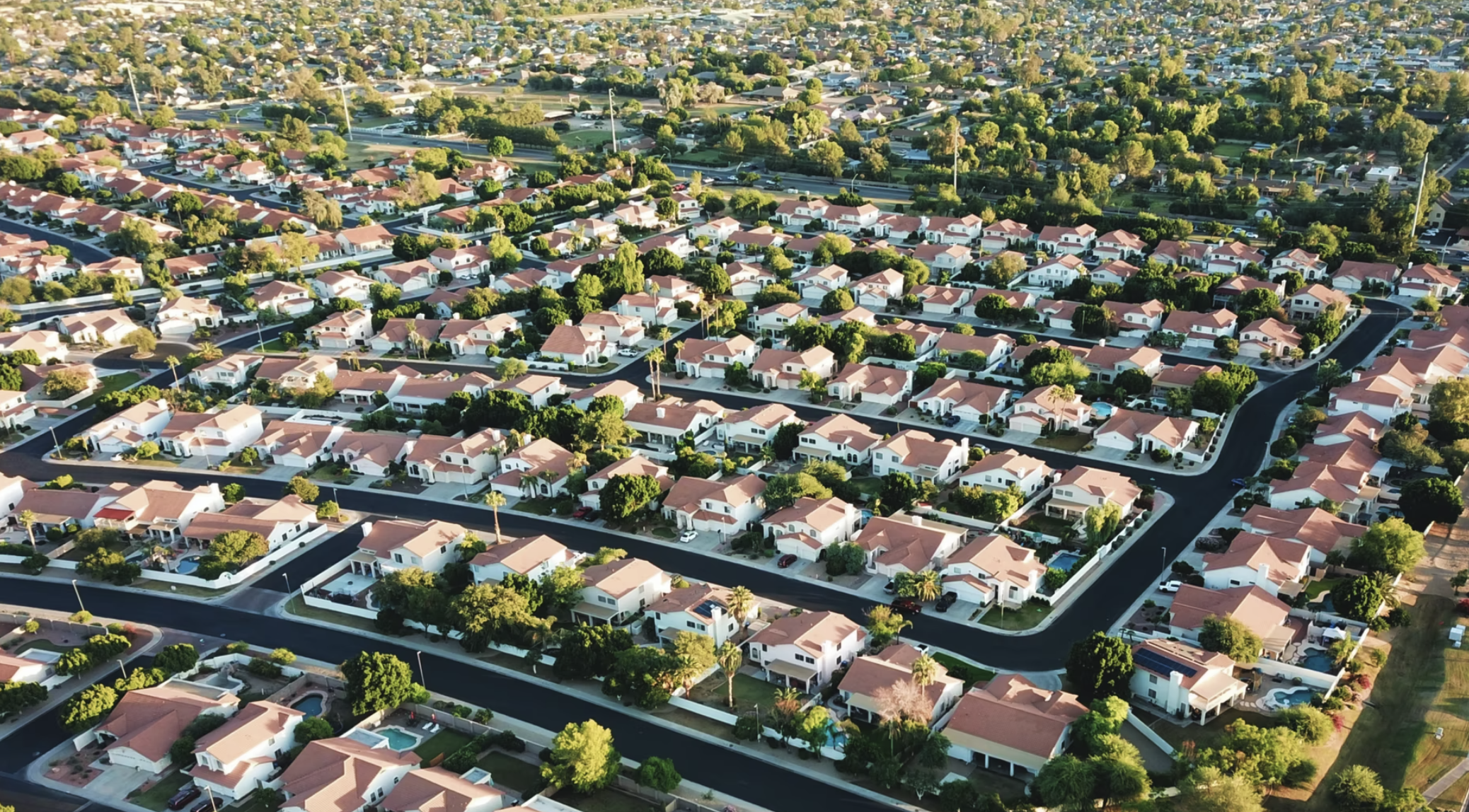Rows and rows of houses neatly arranged in a grid-like formation, carefully manicured lawns and homes that look like direct copies of each other — these single-family dwellings visually reflect the culture of individualism that pervades the United States. While the style of housing may seem inconsequential, single-family housing and the suburbs mean something much darker about our country.
Single-family zoning ordinances are a form of exclusionary housing policy. They are laws that don’t allow multi-family housing — like duplexes, apartment complexes, or townhomes — to be built upon residential land. Unfortunately, around 75% of residential land in the United States is zoned to be this way. These zoning laws are detrimental to creating a market of affordable houses. Only a certain amount of land is available for residential use, and only a limited number of homes can be built on such land. This inflates the price of housing by creating artificial scarcity. Single-family homes become too expensive for low-income families, disproportionately impacting the Black and Latinx communities. The suburbs further residential segregation and concentrate poverty and wealth within distinct regions.
Single-family zoning is only the latest iteration of racist housing policy. Redlining, the systematic denial of housing capital for people of color, was created due to New Deal policies and the Housing Loan Corporation. After the Fair Housing Act of 1968, these discriminatory laws took a more insidious approach, like single-family zoning policies, minimum lot size requirements, and even limits on the heights of buildings. These all work together to reduce the availability of affordable housing with the aim of segregation.
A startling example of this is in California. The Bay Area has zoned 82% of its residential land to be single-family homes. The median home value in San Francisco currently stands at over a million dollars, which is one of the highest house prices in the country. A report found that as home prices increased over the course of 2000 to 2015, segregation in those areas increased as well, and in effect, concentrated poverty heavily within certain regions. As of 2015, 53% of low-income Black families lived within segregated, high-poverty neighborhoods.
The impact of such housing segregation is wide-reaching. As homes are segregated, so are schools. Since school districts in most areas in the country are determined according to residential location, this policy creates starkly different school districts for Black and Latinx students relative to their White peers. Since single-family housing is much more expensive than multi-family housing, their property taxes tend to be much higher as well. Property taxes are a vital funding element for public schools. Not only does single-family zoning segregate residentially, but it also differentiates school funding, creating stark disparities in the quality of education a student receives.
Furthermore, school funding disparities aren’t the only issue that comes out of residential segregation. Concentrating poverty within a limited area creates substantial social problems that cannot be overcome by funding equalization schemes. Because of housing segregation, people of color are more likely to live near dust and pollutants, thereby having much higher rates of asthma and lead poisoning. These communities face higher rates of violence and crime. The instability that comes with concentrated poverty is overwhelming.
There are some easily implementable solutions to this issue. The first step is to abolish exclusionary housing policies like single-family zoning laws. Minneapolis, for example, used to have 70% of its residential land zoned to have built single-family homes, until the city council changed this entire system by abolishing single-family zoning laws. Now the entirety of their residential land is open to being developed to create multi-family housing. However, this cannot be the only solution. Multi-family housing isn’t always affordable housing units; they could be luxury apartments that cater to an affluent clientele.
Housing affordability is not directly solved by getting rid of single-family zoning. This policy has to be partnered with inclusionary housing policies. Minneapolis has done just that by ensuring that all new apartment developments set aside 10% of their units for lower-income families. Montgomery County, Maryland has one of the best systems for inclusionary housing policy. Between 12% and 15% of new developments are required to be set aside for lower-income households. Along with that, a third of these developments are bought by the city government to make them available at affordable rates to the lowest income households. Due to this fantastic implementation of inclusionary housing policy, around two-thirds of public housing residents live within integrated, low-poverty neighborhoods.
This is just the start. Local communities around the country need to begin taking steps that help reverse the horrific impacts of exclusionary housing policy. Good housing policy can reverse school segregation and thereby increase chances of college attendance and social mobility. Good housing policy can improve the stability and safety of a household and reduce public health disparities. The suburbs, which we have come to know as a mainstay of American life, are much more alarming than one might think and need to be radically changed.
Image by Avi Waxman is licensed under the Unsplash License.
Managing Editor




